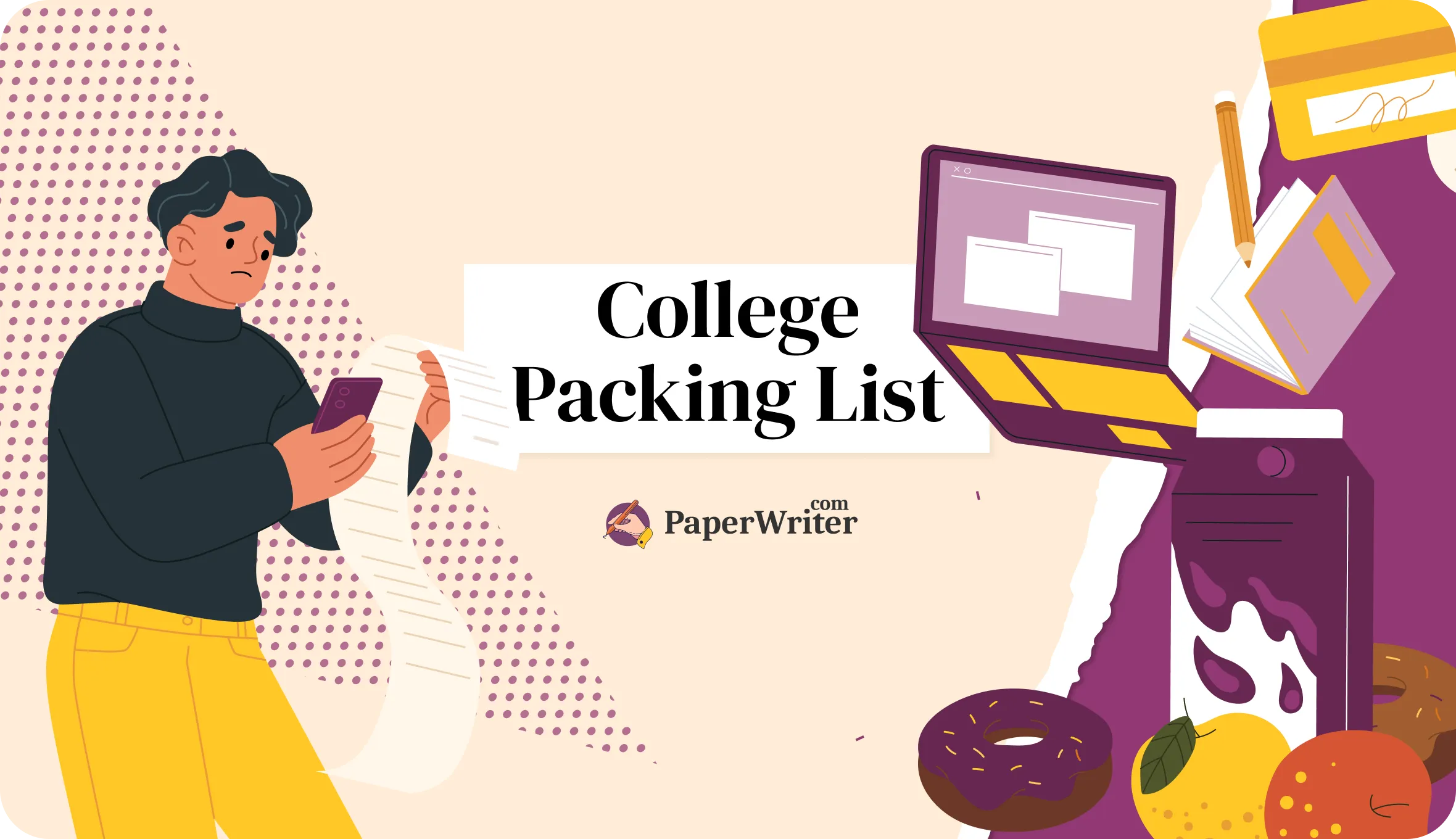Writing an essay is like crafting a masterpiece: it takes creativity and structure. This article will cover everything you need to know, from picking a topic to polishing your final draft. By understanding how to express yourself clearly, organizing your ideas logically, and refining your writing style, you'll be ready to tackle any essay confidently. So, let's get started and discover the secrets to writing essays that grab your reader's attention and leave a lasting impression.
Common Essay Types
According to our coursework writing services experts there are several types of essays, each serving a different purpose and requiring a different approach:
- Narrative Essay
Tells a story or recounts an event, often from the writing expert’s perspective. It aims to engage the reader and convey a personal experience or insight.
- Descriptive Essay
Focuses on describing a person, place, object, or event in vivid detail. The goal is to create a sensory experience for the reader and evoke emotions or imagery.
- Expository Essay
Presents factual information, explains an idea, or defines a concept. It aims to educate the reader on a specific topic, providing clear and concise explanations.
- Persuasive Essay
Aims to convince the reader to adopt the writer's viewpoint or take a particular action. It presents a statement supported by evidence and appeals to logic, emotion, or ethics.
- Synthesis Essay
A synthesis essay combines elements from different sources to create a cohesive whole, presenting a new perspective. Learn how to write a synthesis essay on PaperWriter blog to know more about this topic.
- Argumentative Essay
Similar to a persuasive essay, but with a stronger emphasis on presenting both sides of a statement. It requires thorough research and critical analysis to support the writer's position while acknowledging opposing viewpoints.
- Compare and Contrast Essay
Examines similarities and differences between two or more subjects. It highlights the relationships between the subjects and may explore their implications or significance.
- Cause and Effect Essay
Analyzes the reasons (causes) and outcomes (effects) of a particular phenomenon or event. It explores the connections between actions and their consequences.
- Process Essay
Explains how to do something or how something works, providing a step-by-step guide or chronological sequence of events.
Self-Check List Prior to Writing an Essay
Before starting your essay, assessing your understanding of the topic is crucial, ensuring you've thoroughly researched and comprehended it. Next, verify your access to credible sources that support your thesis, strengthening the essay's credibility. Lastly, outline your vital points and organize your thoughts effectively, creating a clear roadmap for your writing process.
Once you've completed your self-check, review the assignment guidelines to ensure adherence to formatting preferences and word count limitations. Tailor your language and tone to suit the purpose and audience of your essay, enhancing its effectiveness and impact. Mentally prepare yourself for the writing process by finding a quiet space, minimizing distractions, and setting realistic goals for your writing session.
With your preparations complete, approach the writing process with clarity, purpose, and determination. Stay focused, plan your time effectively, and allocate dedicated blocks for writing, revising, and editing. Following these steps will enable you to produce a successful and well-received essay. If deadlines are short, our capstone writing service experts will assisst with your issue shortly.
Essay Writing Process

Introduction
The introduction is the gateway to writing an essay, setting the stage for what's to come. First, you must grab the attention with a compelling hook. This could be an anecdote, a surprising fact, or a thought-provoking question that piques their curiosity. For example, you might start with a startling statistic related to your topic, such as "Did you know that over 90% of plastic waste ends up in landfills or the ocean?" This immediately engages the audience and draws them into the subject matter.
Hook the Audience
Begin with an attention-grabbing hook to draw in your teacher. This could be a surprising fact, a compelling quote, or an anecdote related to your topic. The goal is to captivate your audience and make them eager to read further.
Provide Context
After the hook, provide some background information to contextualize your topic. This could include relevant historical background, definitions of key terms, or an overview of your subject's current state of affairs. This helps orient the audience and establishes the significance of the topic.
State Your Thesis
Clearly state your thesis statement, the thesis, or the point you'll be making in your essay. Your argument should be concise, specific, and debatable, outlining what the reader can expect to learn or understand from your essay. It serves as a roadmap for your essay, guiding the teacher on what to expect in the subsequent paragraphs.
Outline the Scope
Briefly outline the scope of your essay by previewing the crucial points or arguments you'll discuss in the body paragraphs. This gives the professor a sense of the overall structure of your essay and helps them anticipate the flow of your argument.
Transition to the Body
Finally, transition smoothly from the introduction to the body of your essay. This could involve using transition words or phrases to connect your introduction to the first paragraph of your essay. The transition should be seamless, leading the listener naturally from the introduction to the main body of your document.
Main Body
The main body of your essay is where you develop and support your argument in greater detail. Each paragraph should focus on a single point or aspect of your thesis, starting with a topic sentence that introduces the main idea. For instance, if your statement mentions the detrimental effects of social media on mental health, you could have a paragraph discussing how excessive social media use leads to heightened anxiety levels.
Follow the Length Recommendations
The body's length varies according to the essay type, typically constituting 60–80% of your essay. In a high school essay, this might encompass merely three paragraphs, while in a graduate school essay spanning 6,000 words, the body could extend to 8–10 pages.
Present Your Arguments
Each paragraph in the main body should focus on presenting and developing a single argument or idea. Start each paragraph with a clear topic sentence that introduces the key point you'll be discussing. Then, provide evidence, examples, or analysis to support your thesis and demonstrate its validity. Ensure that each paragraph stays focused on a specific aspect of your overall thesis, and use transitions to connect ideas between paragraphs smoothly.
Provide Evidence and Analysis
Back up your arguments with evidence from credible sources, such as scholarly articles, books, or data. This could include quotations, statistics, or case studies that support your claims and lend credibility to your statement. After presenting the evidence, analyze and interpret it to explain how it supports your thesis and contributes to your overall thesis. Avoid merely summarizing the evidence; instead, critically evaluate its relevance and significance in relation to your essential argument.
Conclusion
Tie everything together and leave a lasting impression on the classroom. Begin by summarizing the primary points of your essay, reminding the key arguments you've made and how they support your statement. This helps reinforce your prime points and ensures that everyone walks away with a clear understanding of your thesis. For instance, you might briefly recap the various ways in which social media negatively impacts mental health, from increased anxiety to decreased self-esteem.
Summarize Key Points
Begin by summarizing the crucial points or arguments you've made in the essay. This helps reinforce your argument and ensures that your peers remember the key takeaways from your discussion. Briefly recap the main ideas presented in the body paragraphs, emphasizing their significance in relation to your overall thesis.
Provide a Final Thought or Call to Action
End the conclusion with a strong closing statement that leaves a lasting impression on the reader. This could be a reflection on the broader implications of your argument, a prediction for the future, or a call to action for further research or action. Whatever you choose, make sure it reinforces the central message of your essay and leaves the audience with something to think about or act upon. If you’ve already written your paper but need an expert touch to make it sound sublime, simply say, ‘do my paper for me,’ and our authors will proofread every passage.
Need Expert Help with Your Essay?
You’ve come to the right place – our writers are real-deal experts, hands down!

Expert Tips for Effective Essay Writing
Engage with Counterarguments
While presenting your argument, acknowledge and address counterarguments to demonstrate a nuanced understanding of the topic. Engaging with opposing viewpoints strengthens your thesis and shows you've considered multiple perspectives. This adds depth and credibility to your essay, making it more persuasive to your audience.
Use Varied Sentence Structures
Vary sentence structure to add rhythm and flow to your writing, keeping the reader engaged and interested. Instead of sticking to one type of sentence (e.g., simple or compound sentences), incorporate a mix of short and long sentences and different sentence structures (e.g., parallelism, inverted sentences). This adds variety and sophistication to your writing, making it more engaging and enjoyable. Are you ready to begin working on your first draft? Then, check what is a critical analysis essay to kickstart your creativity.
FAQs
What Is an Essay?
An essay is a written composition that explores a specific topic or idea, presenting the author's perspective in a structured format. It serves as a means of communication, allowing writing practitioners to convey their thoughts, arguments, and insights to interlocutors.
What Is the Structure of an Essay?
The structure of an essay typically consists of three parts: an introduction, body paragraphs, and a conclusion. The introduction provides an overview of the topic and presents the statement, which outlines the essay's main thesis. The body paragraphs develop and support the thesis by presenting evidence, analysis, and discussion. Finally, the conclusion summarizes the key points and restates the thesis, providing closure to the essay.
- changed structure of the article;
- added FAQs block.









.png)
.webp)
